A Guide to Nine of the Most Exceptional U.S. Golf Resorts
The United States is home to more world-class golf resorts than any other place on Earth. While there’s no shortage of worthy options, we’ve narrowed down the list to these nine properties. Consider them your front nine of amazing, public-accessible American golf experiences.
Almost every golfer’s bucket list begins with a round played at Augusta National in Georgia, but unless you’re close friends with Condoleezza Rice — or any of the even more private members — your chances of strolling down Magnolia Lane are all but nonexistent. The same can be said for rounds played at many other revered private clubs across the country. Yet, attainable bucket-list golf experiences in the U.S. still abound, thanks to several exceptional golf resorts. Here’s your short list of properties and courses that are a must-play.
The Most Exceptional U.S. Golf Resorts
Pebble Beach
Pebble Beach, California
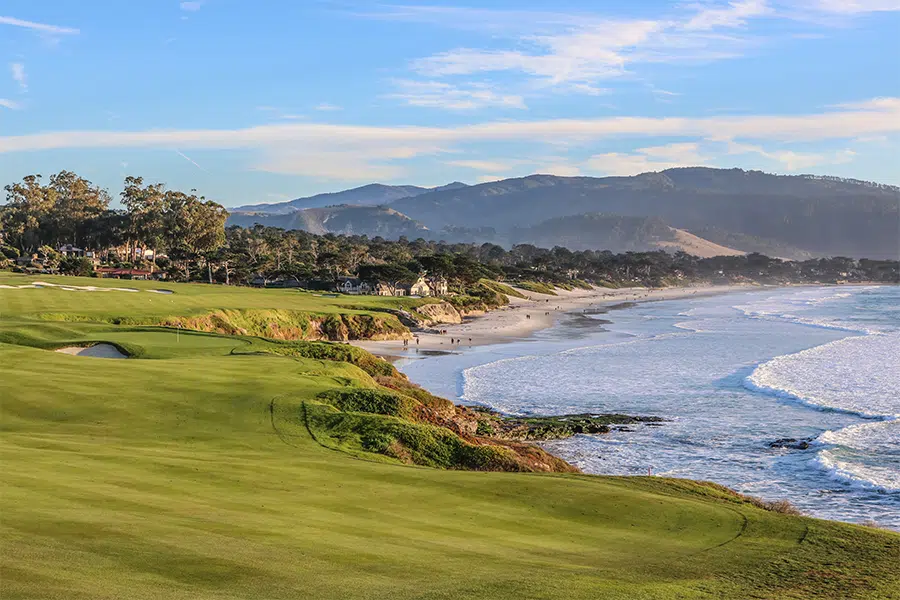
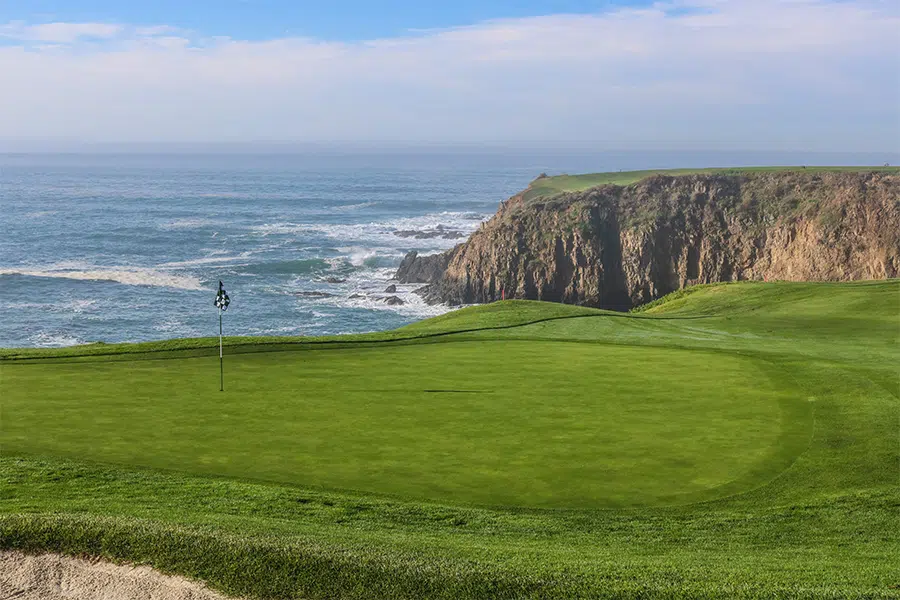
Teeing up at Pebble Beach Golf Links is a rite of passage, one that presents golfers with the opportunity to play a round at America’s most iconic golf resort. The 7,075-yard coastal layout, which has hosted six U.S. Opens (with a seventh scheduled for 2027), is arguably one of the most famous golf courses in the world. For more than seven decades, the best players on the PGA Tour — along with global celebrities — have walked down its fairways and putted on its greens. There’s no shortage of famous holes or famous views along Carmel Bay, and the course’s notoriously small greens (a few of which are precariously perched near cliffs and water’s edge) make for a challenging round.
But Pebble Beach Resort is more than just one golf course. Three additional full-length courses make up the resort’s golfing lineup (not to mention a new short course redesigned by Tiger Woods). In fact, many avid golfers who have stayed at the famous Monterey Peninsula resort have come away with the opinion that Spyglass Hill offers a better layout and a more enjoyable golfing experience than Pebble Beach Golf Links. That course, which opens in the sand dunes just off 17 Mile Drive and transports golfers up into the hills, was conceived by Robert Trent Jones Sr. (in collaboration with the Northern California Golf Association) in 1966, and it was purposefully designed to resemble two iconic and exclusive East Coast courses: Pine Valley and Augusta National.
That said, if playing Pebble Beach’s eponymous course is your number-one goal and you wish to do so more than once, you’ll need to stay at least four nights at the resort.
Kiawah Island Golf Resort
Kiawah Island, South Carolina
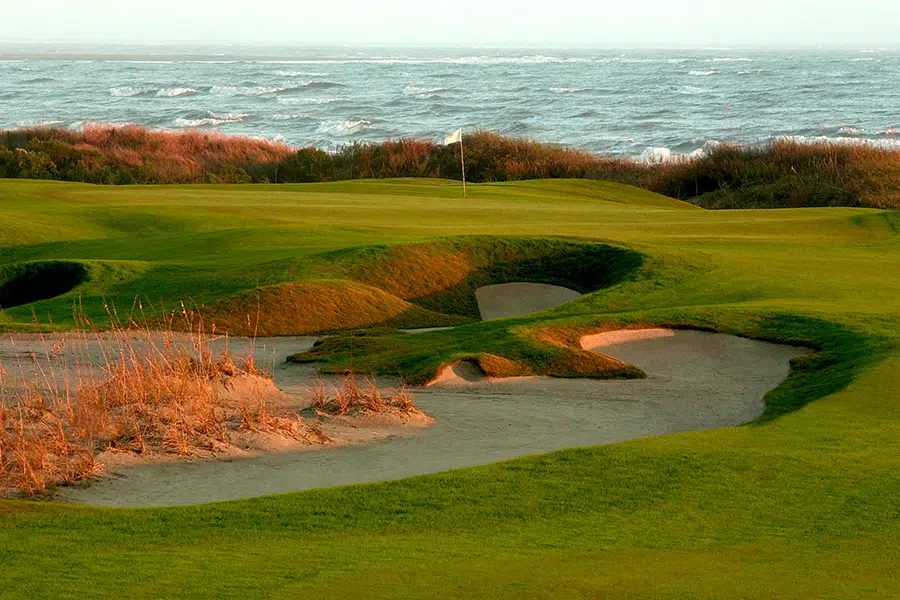
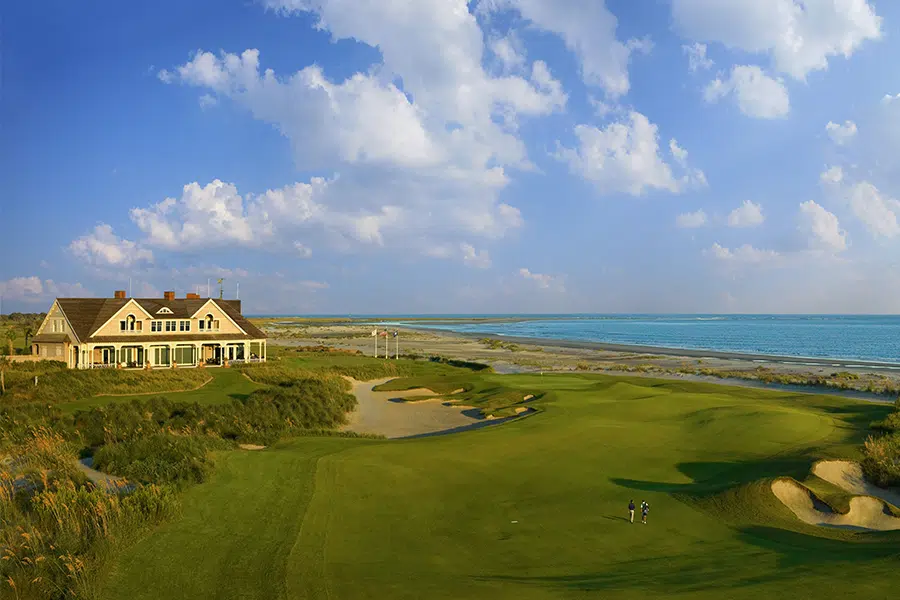
In much the same way that Pebble Beach Resort is famous for its eponymous golf links, Kiawah Island Golf Resort is a bucket-list golfing destination. This is thanks to the Ocean Course, a Pete Dye-designed championship layout set along the eastern end of the island that ranks among the most difficult courses in the country — an accolade that it has maintained since the course first opened 30 years ago. Drama-filled Ryder Cup matches were contested on those fairways and greens the same year that the course opened, which immediately put the resort on golf travelers’ radars. Thanks to four additional, top-caliber courses, the resort has remained there ever since.
Designed by respected architects and revered former players — names such as Fazio, Nicklaus, and Player — the resort’s additional courses (as well as the Ocean Course) all benefited from recent renovations. Of greater significance, those layouts all provide a distinctive on-course experience for the challenges that they pose, the style of golf that they reward, and the environments in which they are set. “That’s what makes Kiawah such a special place for golf,” says Josh Wagaman, the head professional at the resort’s original golf course, Cougar Point. “The five courses are all very different. You won’t get the same experience at any of them.”
Sea Island Resort
Sea Island, Georgia
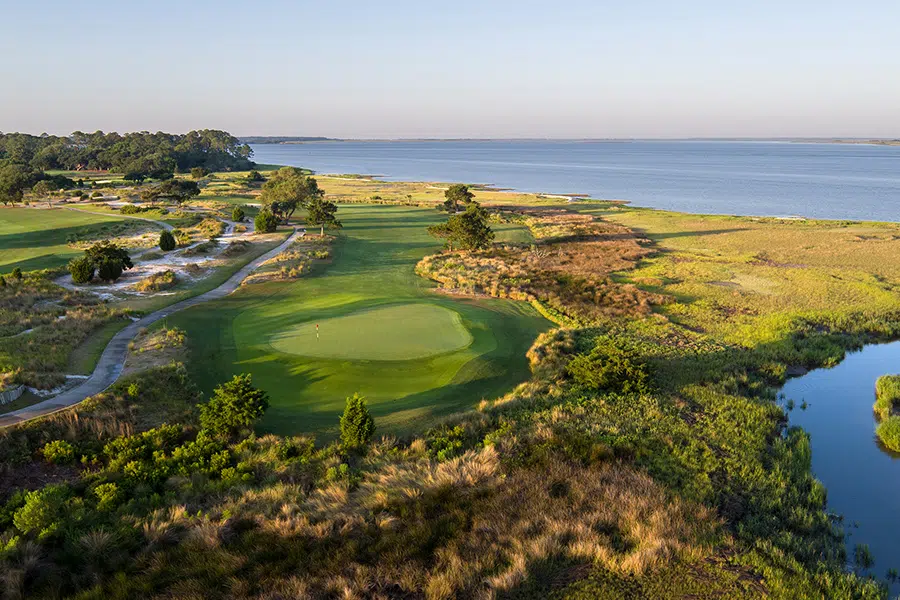
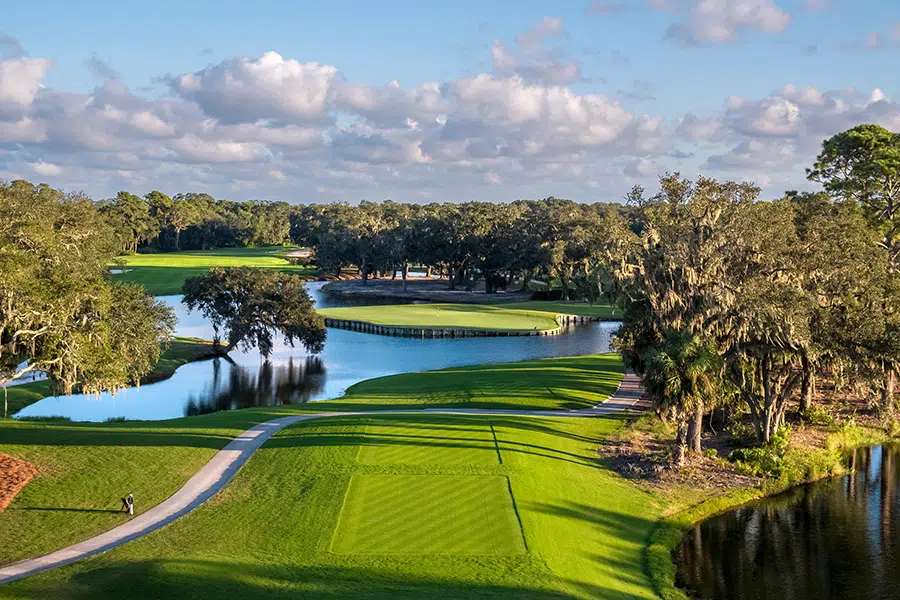
There’s always an allure to playing where the pros play, but avid golfers who book a trip to Sea Island Resort off the Atlantic coast of Georgia can do more than that. They can also play where the pros live. To date, more than a dozen professional golfers that play on the PGA and Korn Ferry tours call Sea Island home; and the PGA Tour has made an annual stop at the coastal resort for more than a decade.
The resort features three championship-caliber courses, a triumvirate best known for the two layouts that host the aforementioned PGA Tour event each fall. Of those two, the Seaside Course is by far the most difficult — a Tom Fazio redesign of a Golden Age classic first conceived by Harry S. Colt and Charles Alison. Although less foreboding in terms of its difficulty rating, the Plantation Course is a stout test all its own. It was recently redesigned by Davis and Mark Love, who took inspiration from the original nine-hole layout that Walter Travis had built at the resort in 1928.
If you’re staying at The Lodge at Sea Island, you could easily focus on just the two aforementioned courses — along with the resort’s state-of-the-art performance center — since they’re all within a short walk of the luxuriously appointed, English-manor-style hotel. Ignoring the Retreat Course, however, would be a mistake, in part because its generous fairways will offer the kind of reprieve that most golfers will need after arduous rounds on the resort’s PGA-tested courses. It also boasts an award-winning spa where you can relax after a round.
The American Club at Destination Kohler
Sheboygan, Wisconsin
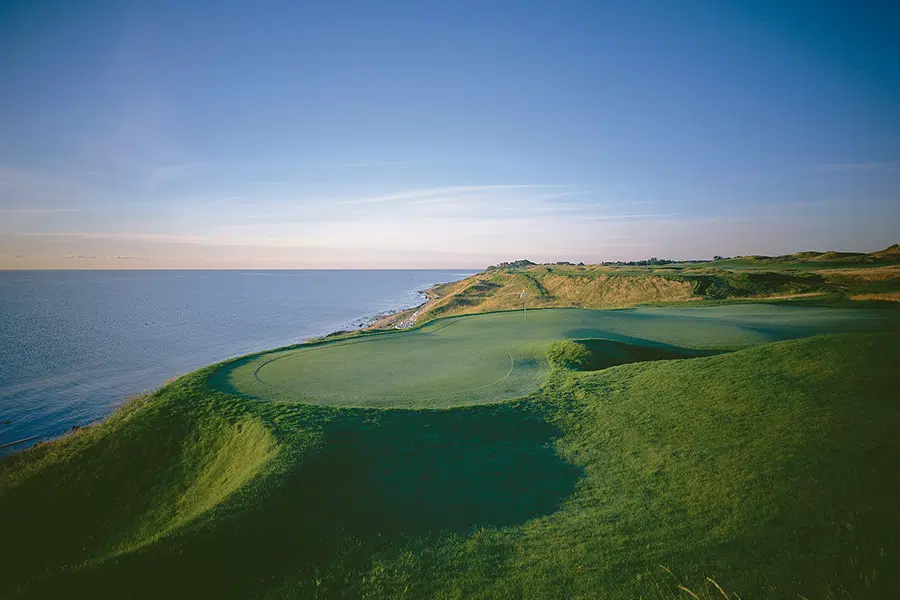
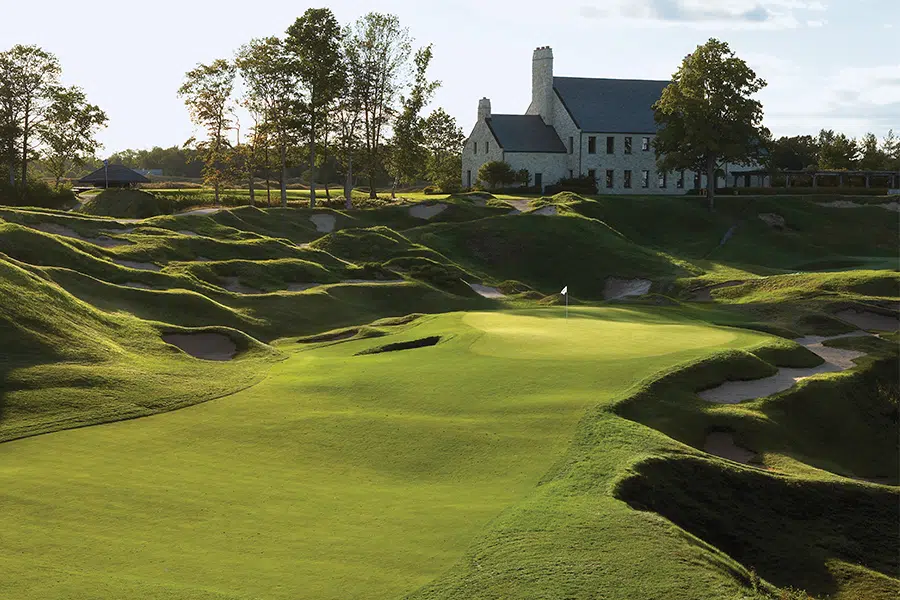
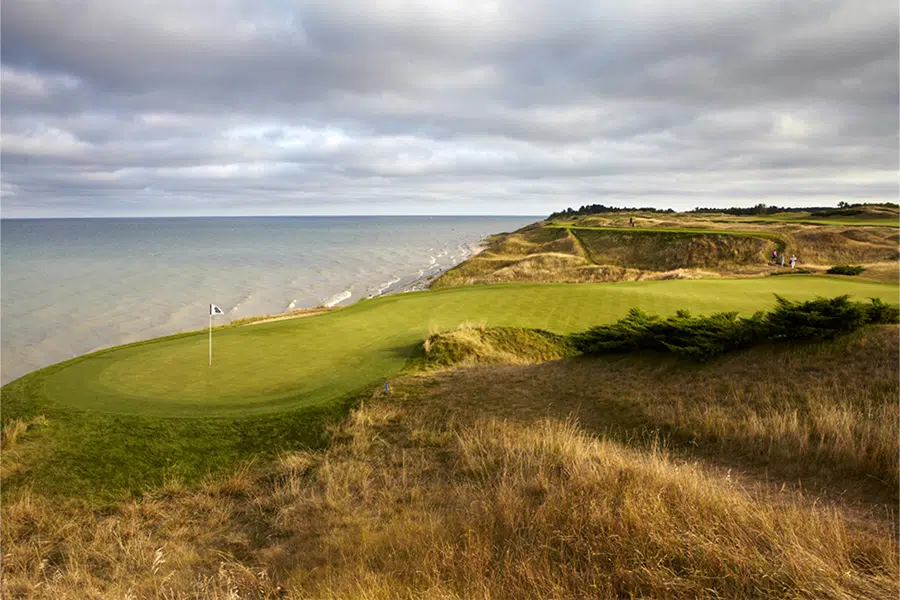
Before 2004, Whistling Straits was perhaps the best-kept secret in American golf. At the very least, the duo of courses there — The Irish and The Straits — were diamonds in the rough. Today, having hosted three PGA Championships, a Senior U.S. Open, and, most recently, the Ryder Cup, Whistling Straits is a destination worthy of the hype.
Those who play either course at Whistling Straits might feel as though they’ve been transported to Ireland’s west coast, and that’s no accident. When Herb Kohler and Pete Dye toured the site that would become The Straits course, then just a flat parcel of land along the shores of Lake Michigan that had previously served as a military airstrip, Kohler gave the late course designer a single order — to make it look like Ballybunion.
Don’t sleep on the two other championship courses at Destination Kohler — the name given to the sprawling resort that Herb Kohler has spent the better part of four decades developing. The River and the Meadow Valleys courses at Blackwolf Run offer a comparable challenge in an idyllic, pastoral setting where precise shot-making is often required. And when it comes to lodging, the rooms and suites at The American Club hotel offer plush amenities with a dash of history. The brick Tudor and Revival-style edifice previously served as a boarding house for immigrant workers for at least the first half of the 20th century.
Big Cedar Lodge
Ridgedale, Missouri
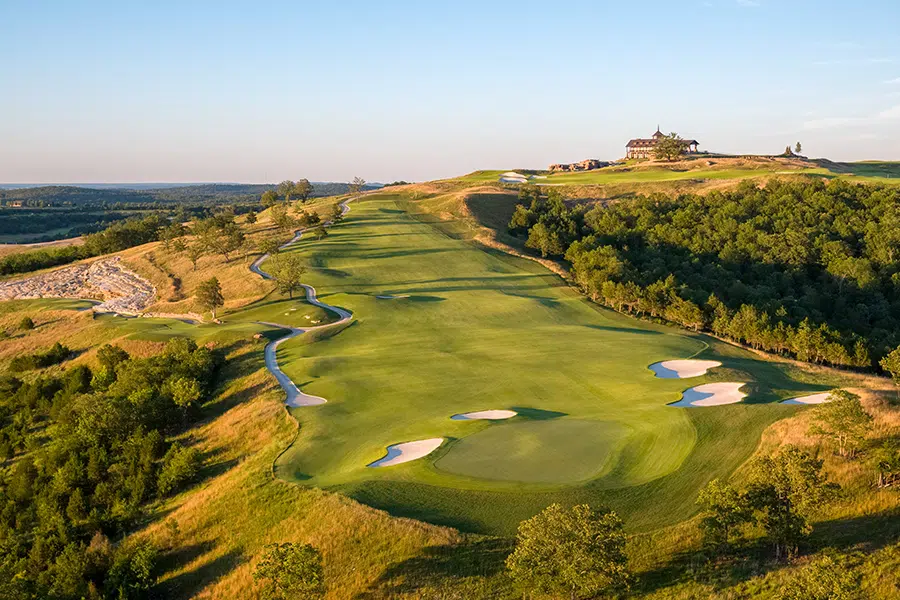
Much like Destination Kohler, there was a time not long ago when Big Cedar Lodge in the southern Ozark Mountains wasn’t on many avid golfers’ radars. Aside from a spectacular nine-hole par-three course designed by Jack Nicklaus, which opened in 1996, there wasn’t much drawing golfers to this Missouri resort.
That began to change in 2014 when Tom Fazio redesigned the resort’s recently acquired Buffalo Ridge course. In the years since, a trio of golf courses designed by top players has opened at the resort — Mountain Top, a 13-hole short course designed by Gary Player; Ozark’s National, a championship-caliber layout conceived by Bill Coore and Ben Crenshaw; and Payne’s Valley, the first public course designed by Tiger Woods.
Since the renovation of Buffalo Ridge, Big Cedar Lodge has hosted eight PGA Champions Tour events, as well as a Ryder Cup-inspired exhibition match that pitted Tiger Woods and Justin Thomas against Rory McIlroy and Justin Rose. Those events have made Big Cedar a compelling destination — everyone wants to tee up where the pros play — but the resort succeeds most for offering exceptional, championship-worthy courses that can be enjoyed by golfers of all ability levels. Moreover, those courses all feature compelling natural features — whether it’s cascading waterfalls, exposed rock formations, or fairways that trundle over and along dramatic ridgelines — which make rounds of golf at Big Cedar all the more memorable.
Bandon Dunes
Bandon, Oregon
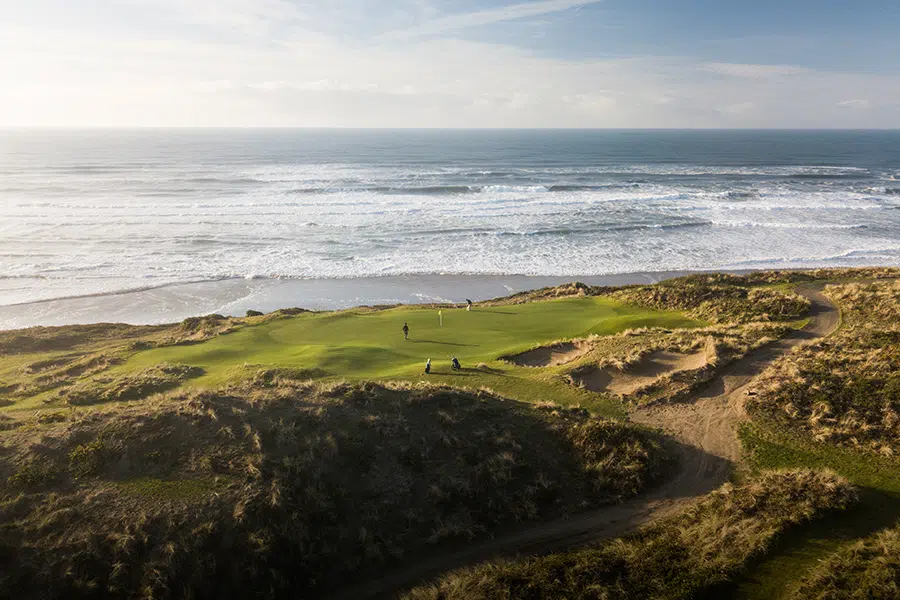
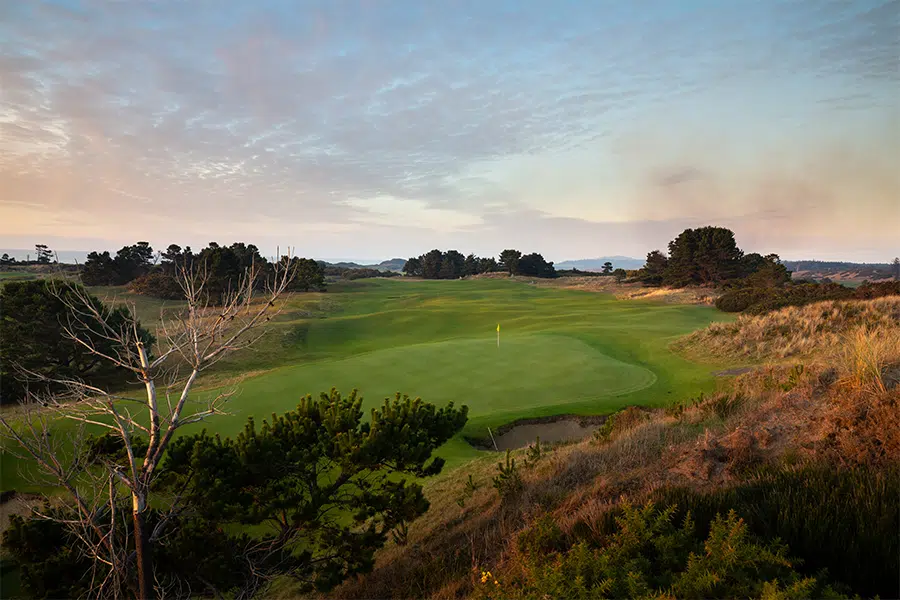
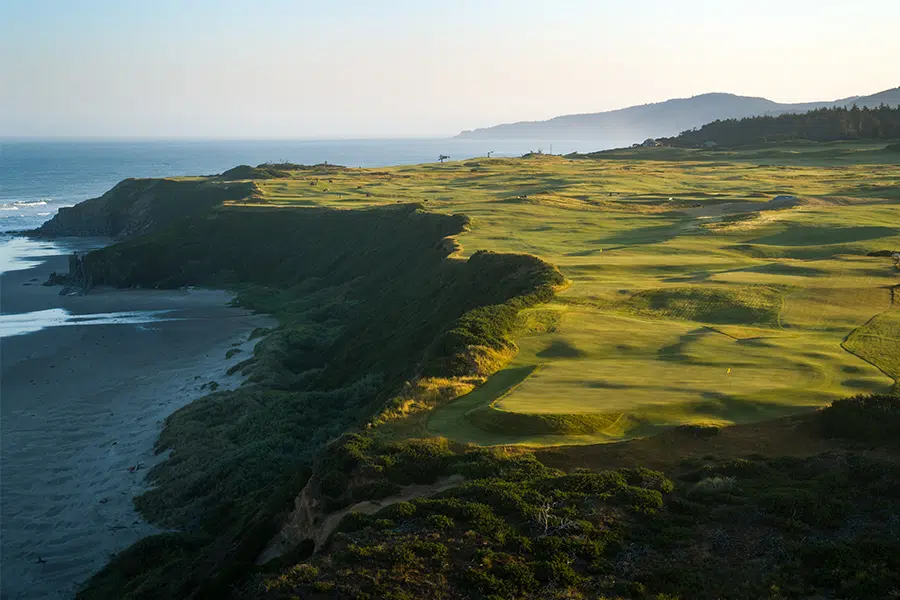
For golfing purists — those who enjoy a walking round and who appreciate the challenges that come with playing traditional links-style golf on firm and undulating terrain — a trip to Bandon Dunes on the southern coast of Oregon can be a spiritual experience. In fact, it’s not uncommon to hear first-time visitors describe their trip in just that way. To play golf at Bandon Dunes — walking the land (with or without a caddie) — guests will be introduced to the allures that first defined the game in Scotland centuries ago.
“We’re all striving for authenticity and experience in every facet of life,” says David McLay Kidd, the golf architect who designed the resort’s first, eponymous course. “Walking is the purest form of playing golf. That’s a truism.”
Today, the resort is home to five full-length, championship-caliber courses, plus a 13-hole short course and a putting course, all of which are walking only. The greatest luxury at Bandon Dunes is the ability to experience natural golf played across rugged, windswept land sans golf carts. However, the resort recently unveiled two dozen Round Lake Lodge rooms, which are the most luxuriously appointed accommodations on the property. Each of these rooms is defined by a minimalist style and offers views of the lake, the surrounding forest, and the 6th and 7th holes on the Bandon Trails course.
Streamsong Resort
Bowling Green, Florida
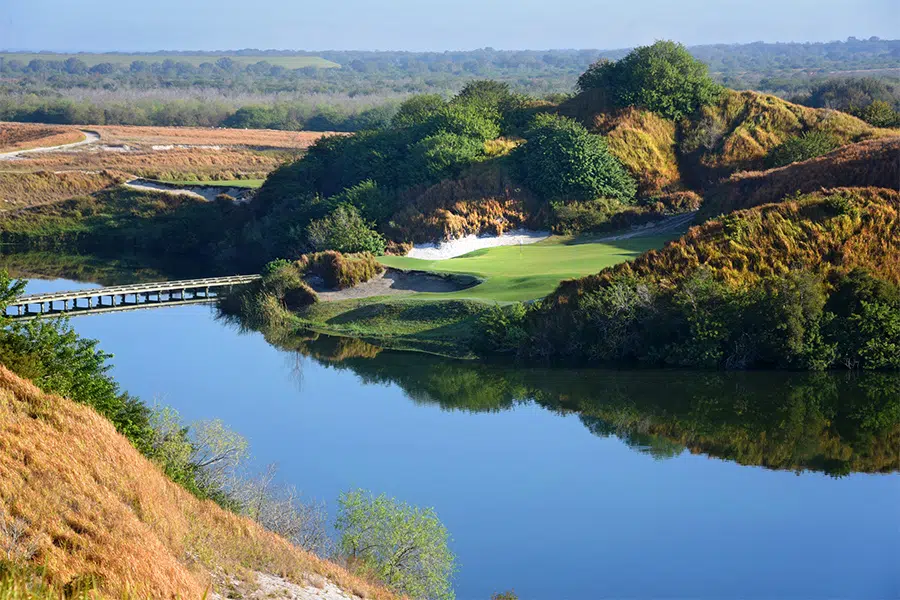
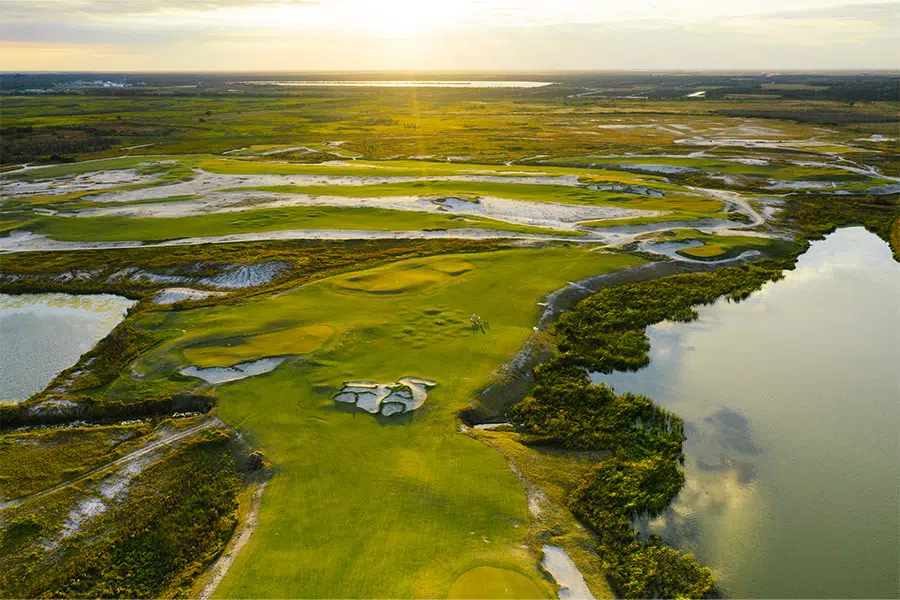
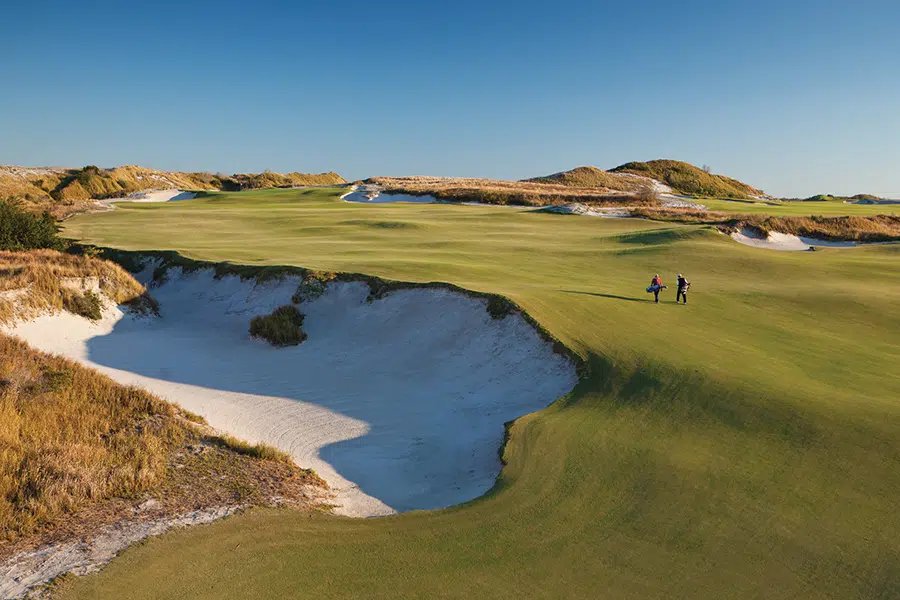
There’s no shortage of exceptional public golf in the Sunshine State, but Streamsong Resort shines brightest, in part for delivering three compelling courses that create a very distinct — and unexpected — sense of place. Stretching out across 16,000 acres of terrain that had been previously mined for phosphate, the resort’s landscape is jagged and precipitous in places. Fortunately, much of the land that was delineated for a trio of golf courses had gone untouched for years, which meant those stacked mounds and trenches naturally revegetated. In doing so, the property’s very un-Florida-like topographical features adopted an organic look and feel.
The end result is world-class Floridian golf that will have players forgetting where in the country they’re actually playing. “If you brought me in blindfolded,” says Tom Doak, who designed the resort’s Blue Course in 2013, “Florida would’ve been the last state that I would’ve guessed I was in.”
When Gil Hanse visited the resort and began designing the Black Course a few years later, he echoed Doak’s remarks. In fact, as Hanse and his team carved out the playing corridors of the Black Course, creating a Floridian layout that successfully replicated the look and feel of traditional Scottish links courses, he made a bold statement. “The landscape at Streamsong,” he said, “is simply like nothing we’ve experienced.” Needless to say, the resort’s unique environs and modern, lodge-style guestrooms make it an excellent choice for your next golf vacation.
Pinehurst Resort
Pinehurst, North Carolina
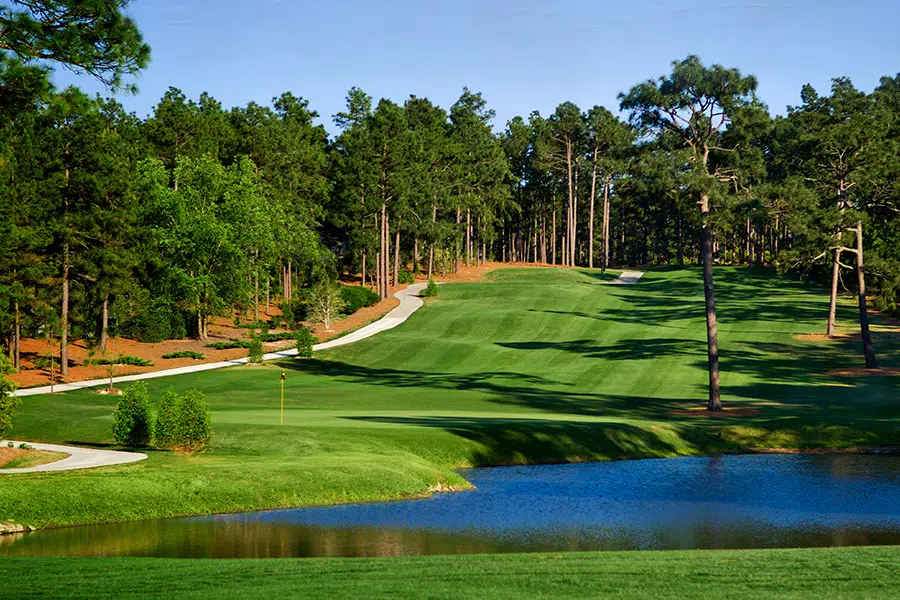
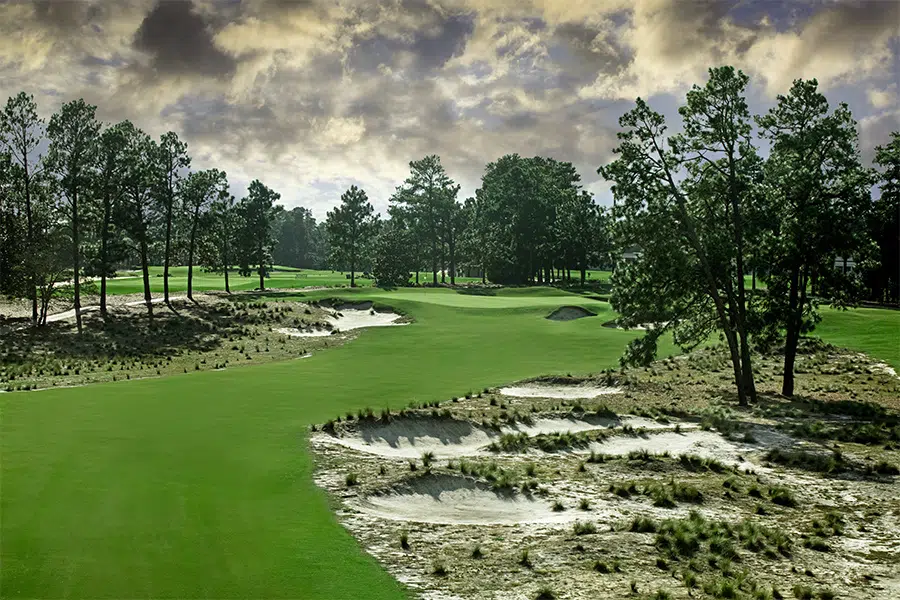
A visit to Pinehurst is unlike any other American golf trip. The adjacent village was developed at the turn of the 20th century in conjunction with the resort, and it only took a few years for the property to introduce golf. In doing so, not only did Pinehurst become America’s first golf resort, but the entire village developed around the sport, too. Today, almost 125 years after the first golf holes were built in the Sandhills of North Carolina, the village and the resort have garnered the deserving reputation for being the U.S. equivalent to St. Andrews, Scotland.
The resort’s position as the nucleus of American golf was recently reaffirmed when the United States Golf Association announced that Pinehurst would serve as the first anchor site of the U.S. Open. Like the three prior U.S. Opens played at the resort, those future championships will be contested on the famed No. 2 course. However, the eight additional courses at Pinehurst Resort are all worthy of your attention. Each one harbors its own history and reflects the distinctive design philosophies of the noteworthy course architects who built them — a collective that includes Rees Jones, Tom Fazio, Gil Hanse, and Jack Nicklaus.
Moreover, Pinehurst Resort stands as one of only four national golf landmarks in the United States — and the only one open to the public — which means it is aptly suited to cater to the demands of the most obsessive golf traveler.
Reynolds Lake Oconee
Greensboro, Georgia
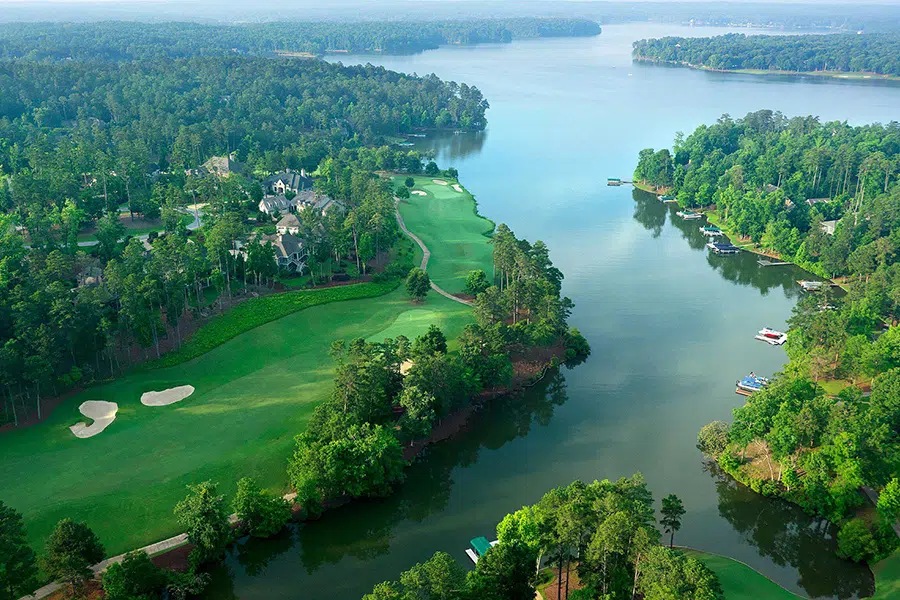
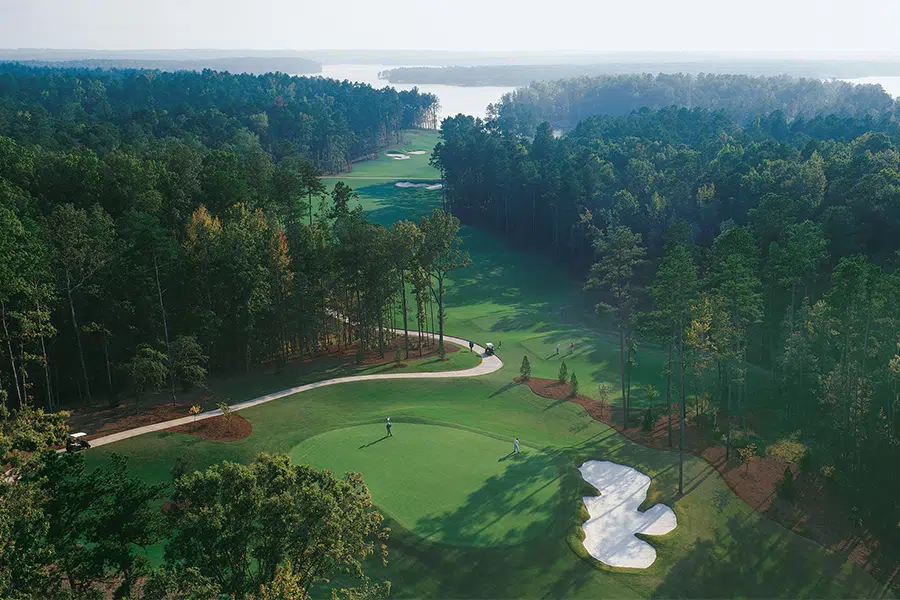
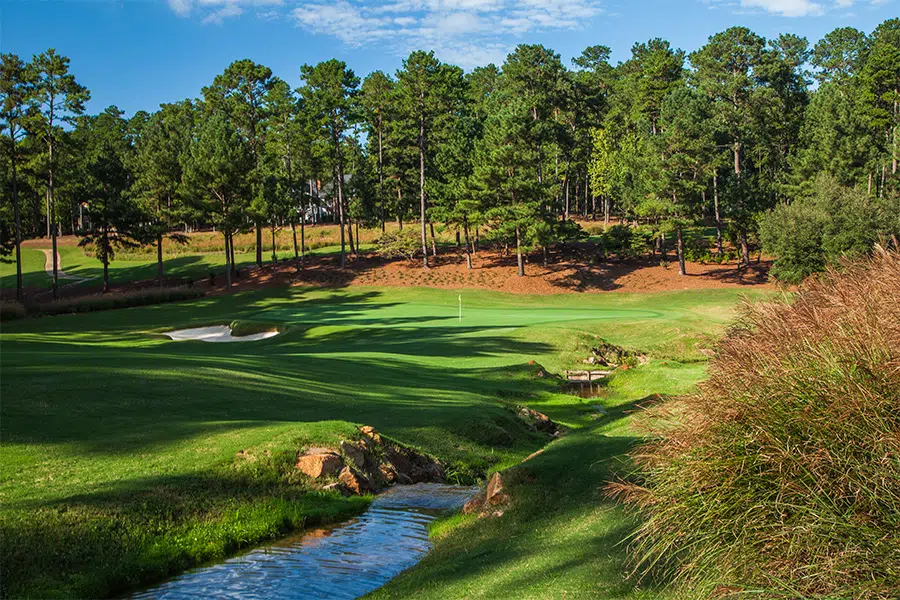
As a player, Jack Nicklaus left his mark on Augusta National by winning six Masters Titles. But as a course designer, he delivered a flagship layout about 70 miles to the east, in Greensboro, Georgia. Within the sprawling, 12,000-acre resort and residential community known as Reynolds Lake Oconee, Nicklaus built Great Waters, a 7,400-yard championship course with a compelling back nine that brings water into play — or at least into view — on the final eight holes.
Great Waters may be Reynolds’ crown jewel, but the resort is also home to 63 additional golf holes that are open to the public and deserving of their own praise. Whether designed by Bob Cupp, Tom Fazio, or Rees Jones, those courses are distinctive in their appeal and the challenges that they present. Yet all meander through similar landscapes and together create a cohesive golfing experience.
The resort community is also home to The Kingdom of Golf, a world-class training and equipment-fitting center that is located only a short walk from the resort’s Ritz-Carlton hotel. Stretching out over 16 acres and equipped with a 7,600-square-foot indoor facility, The Kingdom lives up to its name. Its instruction facilities include an area dedicated to golf fitness, three covered (and heated) hitting bays, and two fully enclosed teaching studios equipped with the latest Trackman technology. There’s also an impressive short-game practice area designed by David Pelz, where players can refine their skills by practicing every shot with every golf club they’ll encounter out on the course.





